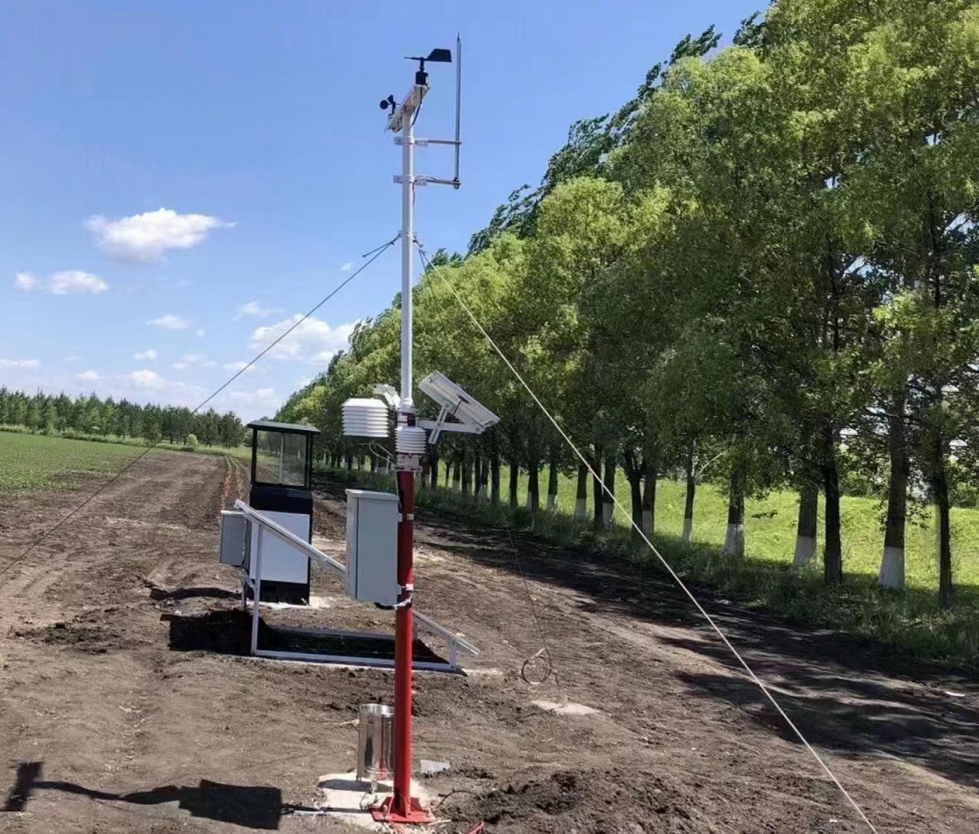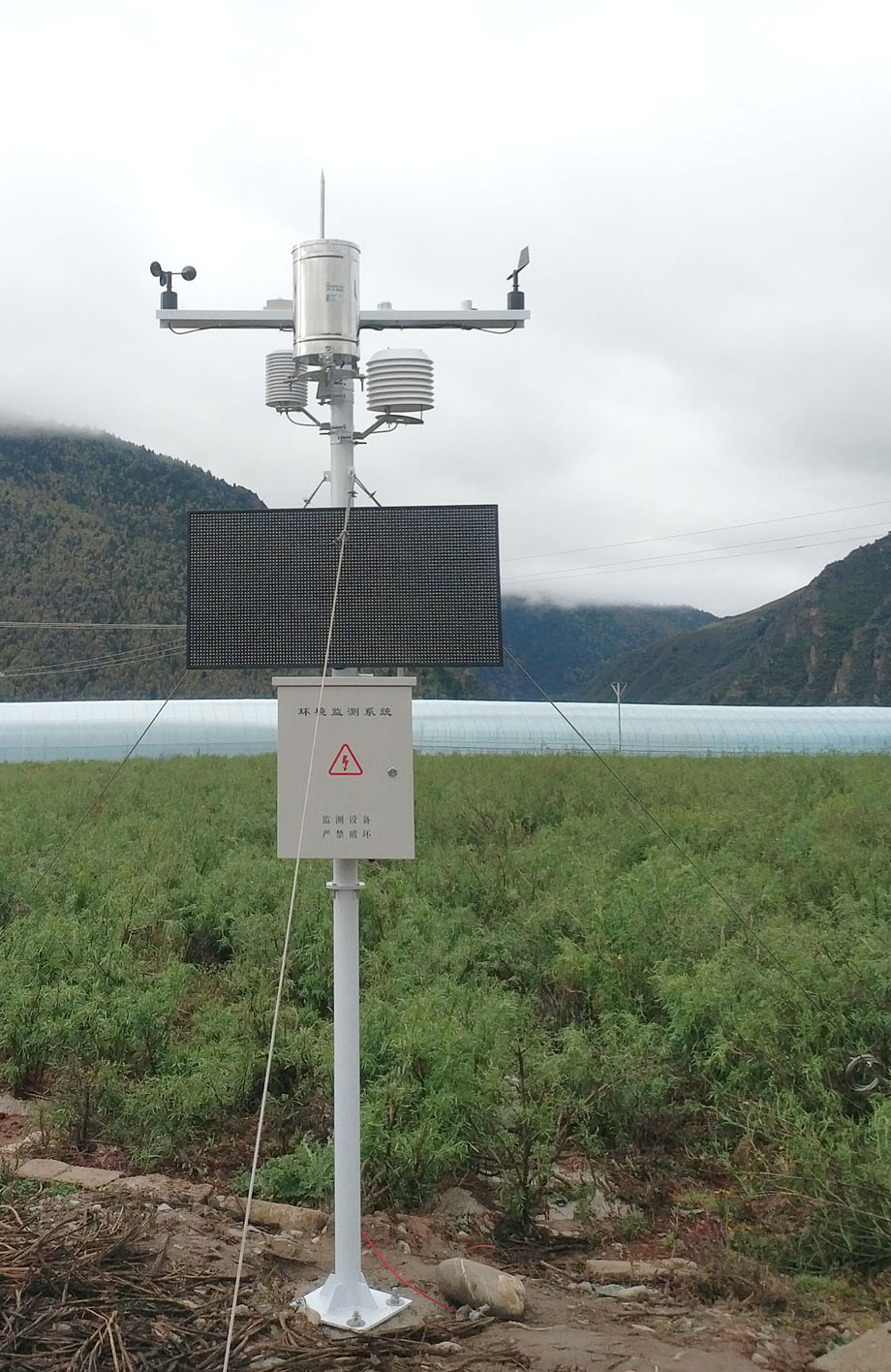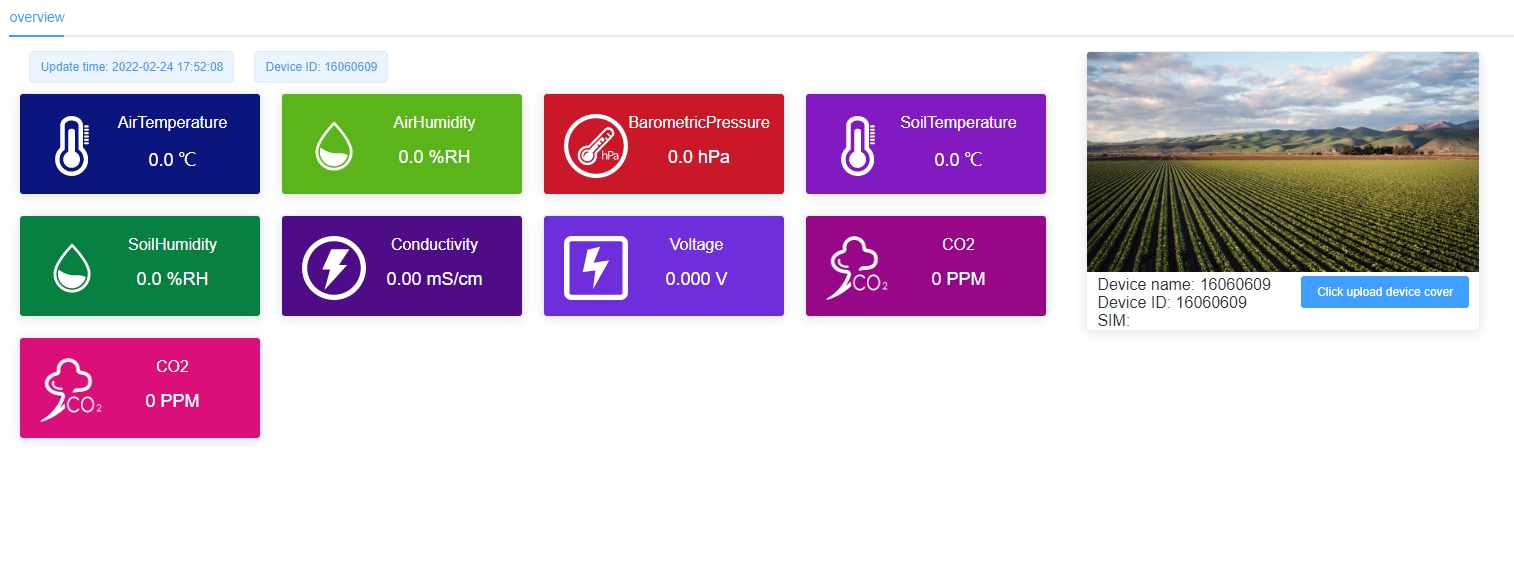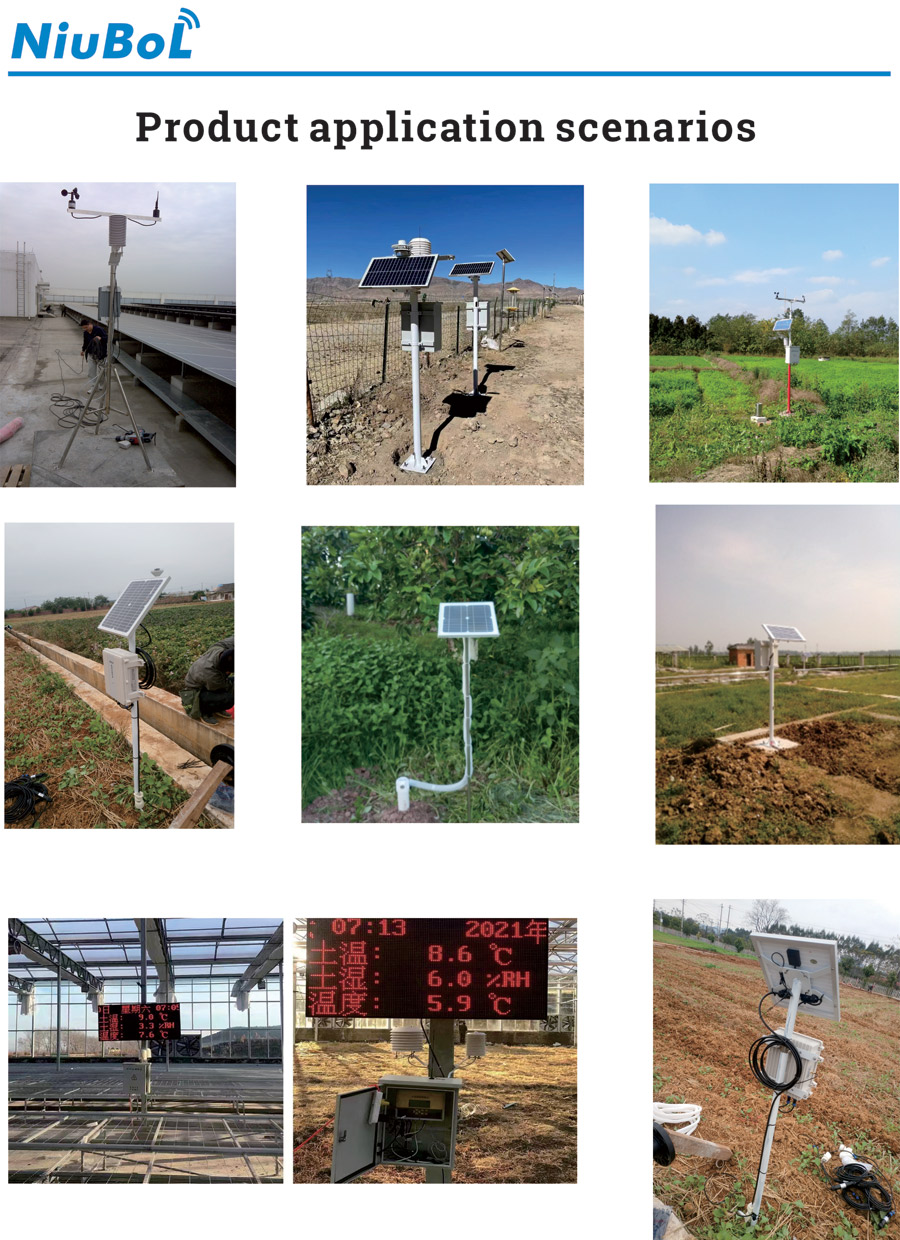

— Blogs —
—Products—
 Consumer hotline +8618073152920
Consumer hotline +8618073152920 WhatsApp:+8615367865107
Address:Room 102, District D, Houhu Industrial Park, Yuelu District, Changsha City, Hunan Province, China
Product knowledge
Time:2025-03-27 21:11:22 Popularity:79
Agricultural meteorological stations are indispensable technological tools in modern agriculture. Through real-time monitoring, data analysis, and intelligent management, they provide scientific support to farmers and agricultural experts, helping optimize production, cope with natural disasters, and promote sustainable agricultural development. This article will provide a detailed introduction to the core functions of agricultural meteorological stations and their key role in agriculture.

Agricultural meteorological stations integrate various high-precision instruments to comprehensively monitor the farming environment and provide data support. Below is a comprehensive analysis of the functions and values of common sensors in agricultural meteorological stations, including air temperature and humidity, wind speed and direction, rainfall, soil temperature and moisture, and soil pH sensors.
As the core tool of smart agriculture, agricultural meteorological stations rely on multiple high-precision sensors to continuously monitor key environmental parameters in the farmland. These sensors not only provide real-time data but also offer important support for optimizing agricultural production, improving crop yields, and coping with environmental changes. Below is a detailed analysis of the functions and values of the common sensors in agricultural meteorological stations—air temperature and humidity, wind speed and direction, rainfall, soil temperature and moisture, and soil pH sensors.

Function:
Air temperature and humidity sensors measure the temperature and relative humidity of the farming environment in real-time, accurately reflecting the comfort level of the crop’s growth environment. These parameters are crucial factors affecting plant photosynthesis, respiration, and water absorption.
Value:
- Optimizing Growth Conditions: Different crops have varying temperature and humidity requirements. For example, rice thrives in high-temperature and high-humidity environments (25-35°C), while wheat prefers cooler conditions (15-20°C). Real-time monitoring allows farmers to determine whether the current environment is suitable for crop growth and take measures (such as ventilation or humidification) to adjust it.
- Disease Prevention: High humidity is often associated with fungal diseases (such as rice blast). Sensor data helps farmers identify abnormal humidity levels early, allowing them to apply pesticides or improve field ventilation to reduce disease incidence.
- Energy Management: In greenhouse agriculture, temperature and humidity data can be linked to automated control systems to precisely adjust heating or humidification equipment, preventing energy waste.
Function:
Wind speed and direction sensors measure the wind speed and flow direction above the farmland. These data directly influence the rate of water evaporation, seed dispersal, and the spread of pests and diseases.
Value:
- Water Management: Strong winds accelerate the evaporation of water from soil and crops, especially in arid regions. By monitoring wind speed, farmers can schedule irrigation more effectively to prevent excessive water loss.
- Pest and Disease Control: Wind direction and speed affect the spread of pests (such as aphids) or pathogens. For example, if a sensor detects that the wind is likely to carry pests into the farmland, farmers can set up protective nets or apply pesticides in advance.
- Spraying Optimization: In pesticide or fertilizer spraying operations, high wind speeds may cause the spray to drift, reducing its effectiveness. Sensor data helps farmers choose the best spraying time to improve resource utilization and reduce environmental pollution.
Function:
Rainfall sensors measure the amount of precipitation over a unit of time, providing accurate data on natural water supply to the farmland. This information is critical for irrigation and drainage decisions.
Value:
- Smart Irrigation: Rainfall data helps farmers determine whether irrigation is necessary. For example, in dry periods with insufficient rainfall, the data allows precise calculation of irrigation amounts, avoiding water waste.
- Drainage Management: In areas with heavy rainfall, excessive precipitation may lead to waterlogging, threatening crop root health. Sensors provide early warnings to help farmers clear drainage systems and reduce flooding damage.
- Yield Prediction: Rainfall is closely related to crop yields. By accumulating long-term data, farmers and researchers can analyze the impact of rainfall patterns on yields and optimize planting plans.
Function:
Soil temperature and moisture sensors are embedded in the soil to monitor the temperature and moisture content in the root zone in real-time. These parameters directly reflect the soil environment's support for crop root growth.
Value:
- Root Health Assessment: Soil temperature affects root metabolic activity. For example, corn growth is hindered when soil temperature drops below 10°C. Moisture content determines whether water supply is sufficient. Sensor data helps farmers assess whether root growth conditions are ideal.
- Precise Irrigation: By monitoring soil moisture, farmers can avoid over-irrigating or under-irrigating. For example, when moisture is below the crop's required threshold, the system can automatically activate drip irrigation equipment, improving water use efficiency.
- Optimal Planting Timing: Soil temperature is an important factor in determining sowing time. For example, before spring sowing, farmers can check sensor data to ensure the soil temperature reaches a suitable level (e.g., above 15°C) for seed germination.
Function:
Soil pH sensors measure the soil's acidity or alkalinity, typically on a scale of 0 to 14, reflecting the soil’s chemical properties. This parameter has a profound impact on nutrient absorption and crop growth.
Value:
- Nutrient Absorption Optimization: Soil pH affects the availability of nutrients. For example, low pH (acidic soil) can lead to an excess of iron, aluminum, and other elements, inhibiting the root's absorption of phosphorus and potassium. High pH (alkaline soil) may lack trace elements. Sensor data helps farmers adjust soil pH by applying lime or sulfur, optimizing nutrient supply.
- Crop Adaptability Assessment: Different crops adapt to different soil pH levels. For example, blueberries prefer acidic soil (pH 4.5-5.5), while alfalfa thrives in neutral to slightly alkaline soil (pH 6.5-7.5). By monitoring pH levels, farmers can select crops that are best suited to local soil.
- Long-term Soil Management: Continuous monitoring of pH values helps track soil quality changes, preventing acidification or alkalization caused by long-term fertilization or rainfall, thus maintaining the soil's sustainable productivity.
In addition to providing immediate decision-making support, these sensors also provide data for long-term research. Scientists can analyze the relationship between soil pH and rainfall, for example, to develop crops that are more tolerant to acidic conditions, thus advancing sustainable agricultural development.
The air temperature and humidity, wind speed and direction, rainfall, soil temperature and moisture, and soil pH sensors are the core components of agricultural meteorological stations. Through real-time monitoring and data analysis, they provide farmers with accurate environmental information, helping optimize crop management, reduce natural risks, and improve production efficiency. These data are updated in real-time, providing users with dynamic “snapshots” of the farming environment, forming the foundation for agricultural management.

Agricultural meteorological stations are not just a set of equipment, but the backbone of modern agriculture. Below are their specific values in global agriculture:
Agriculture is greatly influenced by weather, and every step, from sowing to irrigation to harvest, requires accurate meteorological information. The real-time data provided by agricultural meteorological stations acts as a “health monitor” for crops, helping farmers plan agricultural activities wisely. For example, in areas with insufficient rainfall, drought warnings from the station can guide irrigation planning to avoid crop yield reduction.
Extreme weather events such as flooding, frost, or high temperatures can seriously threaten agriculture. Agricultural meteorological stations provide early warnings, giving farmers time to take countermeasures, such as reinforcing drainage systems or covering crops. This preventive capability is particularly important in today’s increasingly volatile climate.
Water and fertilizers are crucial inputs in agricultural production, but excessive use can increase costs and harm the environment. Agricultural meteorological stations guide irrigation and fertilization based on precise data, preventing waste. For example, when soil moisture is sufficient, the system will suggest pausing irrigation, saving water resources and reducing soil pollution.
Long-term meteorological data offer scientists the opportunity to study the impact of climate change on agriculture. For example, by analyzing years of rainfall and temperature records, more drought- or heat-tolerant crop varieties can be developed. These research results contribute to the improvement of agricultural adaptability and sustainability.
Globally, smart agriculture is becoming a trend. Agricultural meteorological stations, as data sources, combine with technologies such as drones and automation devices to build a smart agricultural ecosystem. This integrated management not only increases production efficiency but also provides small-scale farmers with opportunities to compete with large enterprises.

Agricultural meteorological stations are the technological backbone of modern agriculture. Through real-time monitoring, data analysis, and intelligent management, they help farmers cope with weather challenges, improve production efficiency, and protect the environment. From the fields to research laboratories, their role is pervasive. Whether combating climate change or promoting the development of smart agriculture, agricultural meteorological stations demonstrate their irreplaceable value. As technology continues to evolve, they will bring even more possibilities to global agriculture, helping humanity achieve sustainable development goals.
Prev:Classification and Application of Meteorological Monitoring Equipment
Next:Agricultural Meteorological Stations and Forestry Automatic Monitoring Stations
Related recommendations
Sensors & Weather Stations Catalog
Agriculture Sensors and Weather Stations Catalog-NiuBoL.pdf
Weather Stations Catalog-NiuBoL.pdf
Related products
 Combined air temperature and relative humidity sensor
Combined air temperature and relative humidity sensor Soil Moisture Temperature sensor for irrigation
Soil Moisture Temperature sensor for irrigation Soil pH sensor RS485 soil Testing instrument soil ph meter for agriculture
Soil pH sensor RS485 soil Testing instrument soil ph meter for agriculture Wind Speed sensor Output Modbus/RS485/Analog/0-5V/4-20mA
Wind Speed sensor Output Modbus/RS485/Analog/0-5V/4-20mA Tipping bucket rain gauge for weather monitoring auto rainfall sensor RS485/Outdoor/stainless steel
Tipping bucket rain gauge for weather monitoring auto rainfall sensor RS485/Outdoor/stainless steel Pyranometer Solar Radiation Sensor 4-20mA/RS485
Pyranometer Solar Radiation Sensor 4-20mA/RS485
Screenshot, WhatsApp to identify the QR code
WhatsApp number:+8615367865107
(Click on WhatsApp to copy and add friends)